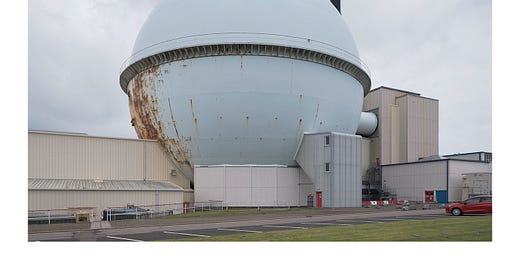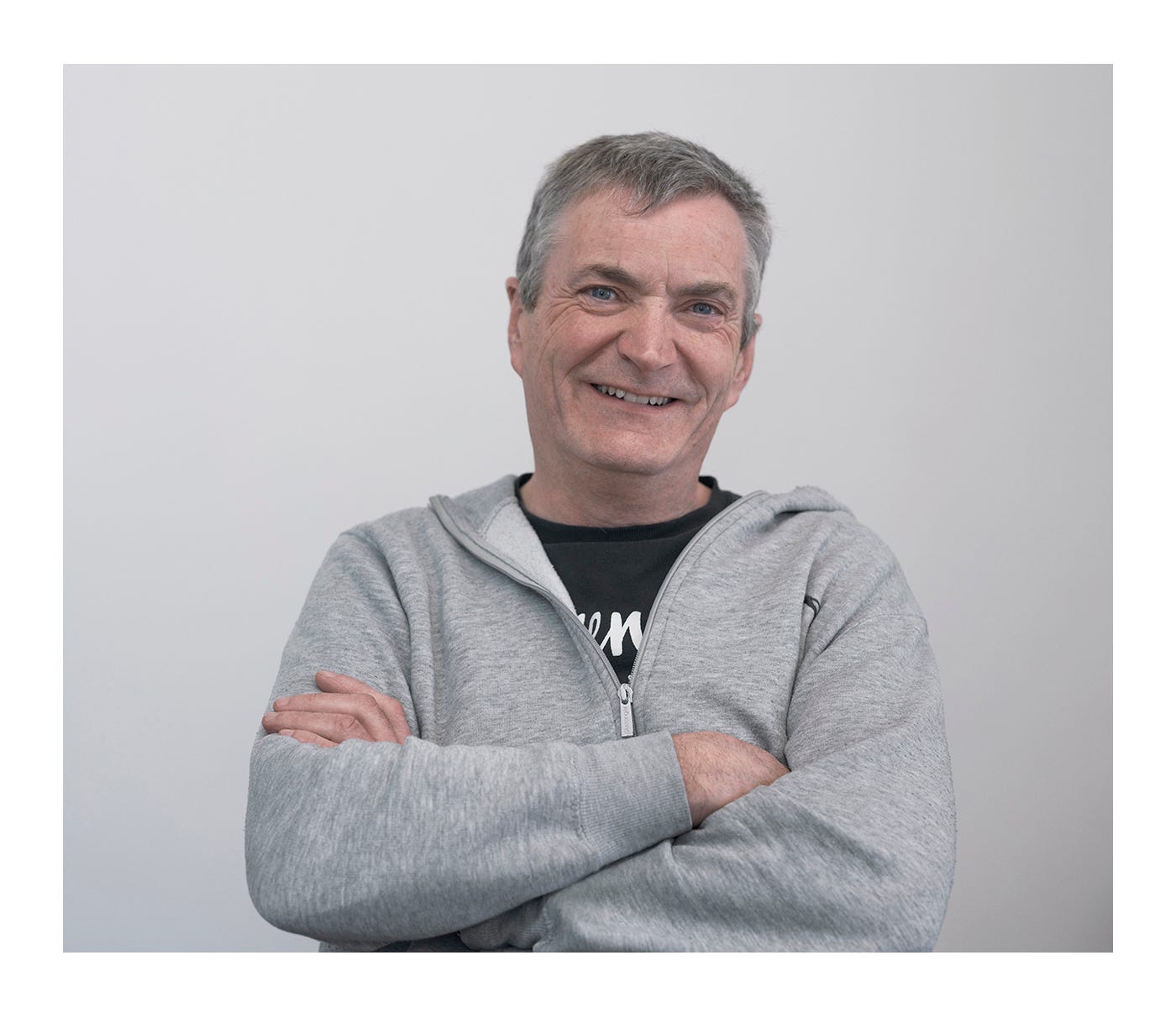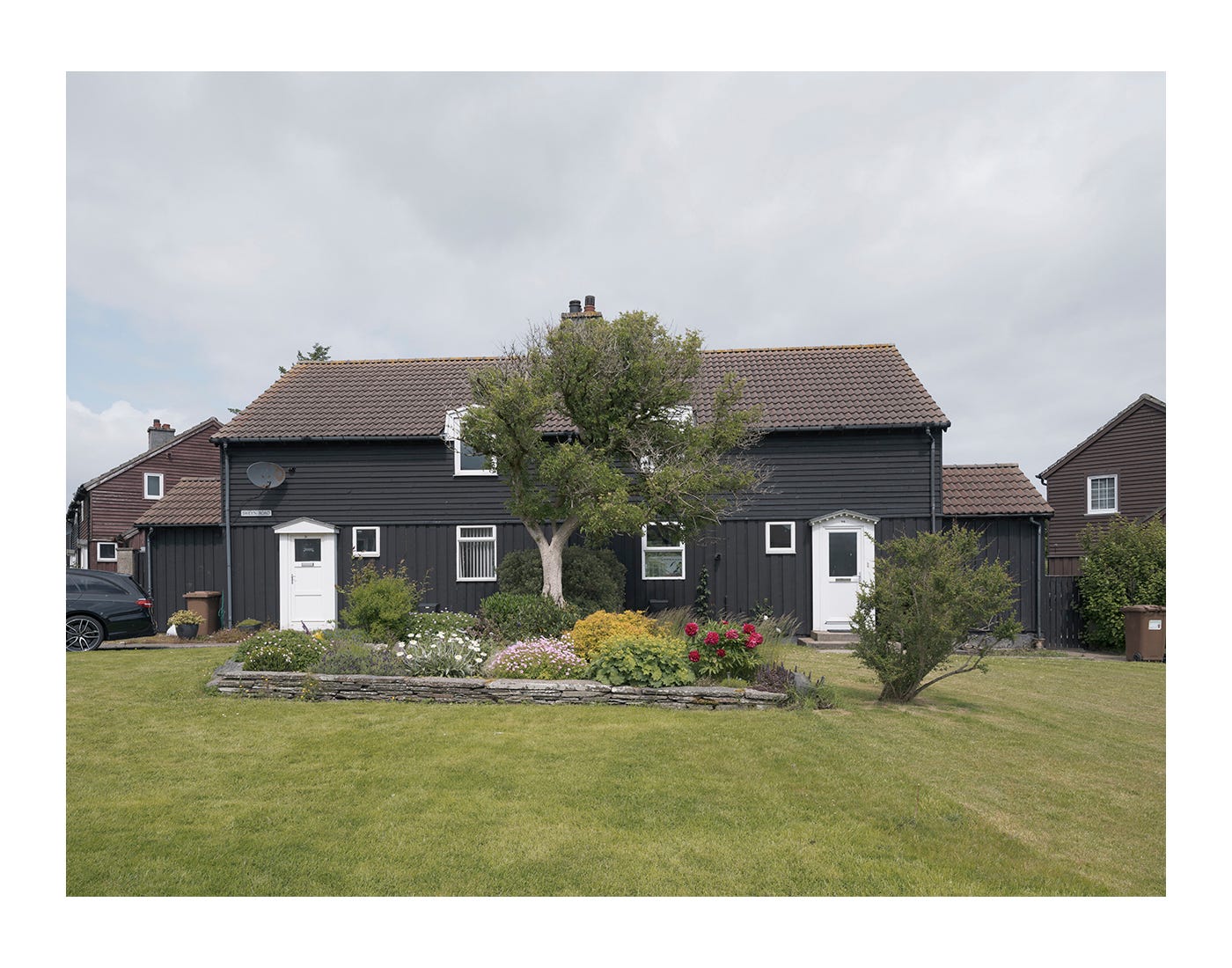The Dounreay Experiment
Lessons in the pros and cons of atomic innovation in Scotland's far north
Gordon Tait still remembers the visit that Cecil Parkinson, then Margaret Thatcher’s energy secretary, paid to the atomic plant at Dounreay on Scotland’s northern tip in the spring of 1988 - and the sense of betrayal that followed it. “He came up here and told us: ‘You are doing a great job here chaps, this is really good’, the rangy Scottish engineer said. “Then he went back to parliament in London and told them: ‘We are going to shut down the fast reactor programme’.”
Tait’s face crinkles ruefully at the memory. He is 60 now, and semi-retired, but back then he was a fresh-faced assistant shift manager just out of university, who expected to spend his entire career working on the Dounreay reactor. The project was one of those incredibly bold bets that Britain placed on technology immediately after the Second World War. Despite a towering national debt and many other calls on the public purse, Winston Churchill’s government established a giant physics experiment in an attempt to give the UK an enduring lead at the cutting edge of civil nuclear power.
The task was to crack a tantalising problem: how to build an economically viable reactor that not only burnt nuclear fuel but produced as a by-product more fissionable material than it was consuming. This seemed to hold out the alchemist’s promise of inexhaustible, bounteous power.
I’ve been twice to Dounreay over the past two years to look at what remains of a project that once drew thousands of engineers and scientists from across the country to an almost deserted part of Scotland. Tait’s family were part of the influx, coming originally from Glasgow, and he was a second generation employee. His father had arrived in the 1950s, drawn by the prospect of cutting-edge research into what seemed like a new miracle energy source. “Nuclear reactors and nuclear physics were his life’s work and what he believed in,” Tait recalled.
When Parkinson’s announcement came in July 1988, it fell on Dounreay and the neighbouring town of Thurso like a thunderbolt. The government, which was preparing the ground to privatise Britain’s electricity industry, no longer saw the virtue of pumping £50 million a year into researching advanced nuclear technology, the energy secretary said. The expectation was “that commercial deployment of fast reactors in the United Kingdom will not now be required for 30 to 40 years.” The plant wouldn’t close all at once. The reactor would stay open till 1994 and the associated fuel reprocessing plant three years after that. But then it would be over, with just a skeleton staff left to help clear up the site.
Dounreay’s story is worth considering as the UK starts trying to revive its nuclear industry after more than three decades of neglect. One consequence of the hiatus is that the country has little to show for its past investment. Pretty much all the intellectual property from Dounreay ended up not in Britain but in Japan, at its Monju fast reactor project. Dounreay’s staff are largely retired, their skills lost. “When Thatcher shut the plant, she didn’t say we won’t need fast reactors ever, she said we won’t need them for 30 years and blow me she was right,” said Tait. “Where she was wrong was when she said we’ll not retain the knowledge and buy them from overseas. I guess she thought her pal Ronnie Reagan would be the purveyor. But look at who supplies all the reactors now: Russia and China. In the interim we have lost all the knowledge.”
Before we get on to the story of Dounreay and its project however, it’s worth asking a question; why fast reactors? Why go to all the trouble of cracking such a moonshot technology in the early 1950s - just a few years after the UK had struggled to perfect its first primitive atomic “piles” at Windscale in Cumbria? It sprang partly from a desire to leapfrog rivals - then the USA and Soviet Union - in the evolving technology of civil nuclear energy. Sir Christopher Hinton, the poker-playing head of the UKAEA’s nuclear energy activities, was a particularly fervent believer. But there was also a more practical reason: energy security. One of the big barriers to adopting nuclear power was the perceived scarcity of uranium, whose main sources were then the Belgian Congo in Central Africa and Soviet-controlled Czechoslovakia. Short supply not only made the element expensive, messing up the economics which required nuclear energy to be competitive with coal; it also encouraged military authorities to hog supplies of fissile material for the purpose of making bombs.
The attraction of fast reactors was their promise to get round this problem by squeezing almost unlimited power out of nuclear fuel. A fast reactor can produce 60 times more usable energy from a given quantity of uranium than any of the so-called thermal reactors. And by irradiating a “blanket” of more uranium that is wrapped around the core, it becomes possible to breed more plutonium, itself a powerful energy source. For a country like the war-battered UK, without oil or indigenous uranium, and whose coal supplies were dwindling, this held out the dizzying vision of long-term energy security.
But if that was its promise, the technology also posed plenty of challenges. Such as the need to use liquid sodium, a highly volatile element, as a coolant, and highly enriched uranium as a fuel. Both were entirely new areas. What would happen if the plant malfunctioned? Hadn’t the government’s own chief boffin, Lord Cherwell, called the fast reactor design “a controlled bomb”? Caithness in northern Scotland was chosen for its remoteness, being, as the civil servants put it, “appropriate to a first experiment in an unknown field of development.. of a potentially hazardous nature.” The desire for an economic boost in the depressed region overcame any local reservations. The local MP, Sir David Robertson, fervently championed the plant, seeing it both as a chance to revive the district and to bolster his own slender majorities.
It took the UK Atomic Energy Authority the best part of a decade to get to grips with the intricacies of the design. Over that time, nearby Thurso mushroomed to accommodate the influx first of construction workers, and later of scientists and engineers. The town’s population more than tripled from 3,000 to nearly 10,000 and for a time it had the second largest secondary school in Scotland. Whole housing estates were built - the first in Caithness with garages and underfloor heating - while social and commercial opportunities expanded. “A lot of the top scientists in Britain were coming to Thurso,” said Heather McLean, then a pupil but later a teacher and deputy head at Thurso High School. “All the children’s organisations in the town - scouts, guides and so on - went from having one company to having three or four. Along with the town amateur dramatics, the Thurso Players, you had the Dounreay Players. Aspects of the town life grew. Overall, people were aware that Dounreay made more things possible.”
Yet always the spectre at the feast was the question of whether fast reactor technology would be economically viable, and, if it was, whether the UKAEA would build a commercial plant at Dounreay. In 1966, that question appeared to be answered when the government sanctioned the construction of a 250 megawatt prototype commercial fast reactor on the site. When Frank Cousins, the Minister for Technology, announced the decision to the House of Commons, he said the government had “taken into account the economic and social circumstances of Caithness including the considerable investment in housing and schools in Thurso”. In the town, the sigh of relief was audible. “People felt it was a reward for all their hard work and the risk they’d taken,” said Innes Miller, then a local farmer.
By the seventies, however, the tides were turning against fast reactor technology. Uranium turned out to be far more abundant than expected. A series of finds round the world meant that production rose from 3,713 tonnes in 1950 to 68,052 tonnes in 1980, by which time there was a glut and the price had plunged. There was little need to go through the expense of reprocessing nuclear fuel to eke it out. Meanwhile, fears about nuclear proliferation raised questions about the merits of reprocessing itself. Was it really wise to recover plutonium from spent nuclear fuel rods, especially if you then shipped it to customers abroad? In 1977, President Jimmy Carter closed the Barnwell reprocessing plant in South Carolina on proliferation grounds, and announced the US would take no further part in this activity.
The biggest problem though lay with the prototype reactor itself. It proved extremely difficult to build and construction overran by three years, only completing finally in 1974. Even once up and running, reliable operation remained elusive. The plant’s “load factor” - the proportion of time it was producing electricity and hence earning revenue - didn’t get above 15% until the mid 1980s. Even in the cloudy UK, a solar farm achieves around 11%. Given the high underlying costs of fast reactor technology - the need for highly enriched uranium and elaborate (and persistently fallible) cooling systems - these numbers were disastrous. By the late 1980s, with nuclear energy heavily out of fashion after the Chernobyl accident, the plant’s fate was sealed.
Three decades have passed since Dounreay’s fast reactor closed. The plant’s after life has proved much more labour intensive than the UKAEA expected. There are still around 2,000 people working at the site, and, while a good number are contractors bussed in to do a specific decommissioning task, the clean-up still contributes some £200 million a year to the community. Dounreay experienced no deep post-closure slump like the coal mining communities after the pits shut down. North Sea oil - whose production was peaking in the 1990s - offered alternative avenues for well-paid, skilled engineering employment. But slowly the realities of Caithness life reasserted themselves: local opportunities and amenities dwindled, the UKAEA estates were sold off, and Thurso is again depopulating.
Like many nuclear communities, the inhabitants mainly mourn the loss of the secure high paid jobs that the plant brought, as well as the extraordinary social and scientific influx that - for a time - made Thurso one of the “brainiest towns in Britain”. Dounreay remains a licensed nuclear site and, despite the Scottish government’s ban on new nuclear development which remains in place, many townspeople hope they will build a new reactor before all the skills are finally lost. “They say they’re thinking of new atomic and I do hope they do something,” said Elizabeth MacDonald, whose parents’ farm was absorbed by one of the so-called atomic estates. “There wasn’t much for us in the county before Dounreay came.”
What lessons though can be gleaned from Dounreay’s experience? We are, after all, at a point where those Thursoan dreams are not wholly unrealistic. Western countries like the UK are again looking to nuclear power as a replacement for fossil fuels - this time for climate reasons. One lesson might be that it’s worth thinking hard about pursuing nuclear innovation instead of going with existing, tried-and-tested technologies. These may have drawbacks - but they are at least known to work. While the Dounreay experiment didn’t stop the UK pursuing other designs in the 1960s and 1970s - such as the Magnox gas cooled reactors, or looking at heavy and light water types - there is a sense the UKAEA became too focused on cutting-edge technology rather than surveying the commercial landscape and going with what actually did the job (exhibit A: the innovative but problem-plagued AGR).
Sticking with proven designs seems doubly wise given the need to start building quickly if nuclear is to pay any meaningful role in reducing carbon emissions. The industry does know how to construct - albeit too slowly and expensively - light water reactors that can reliably achieve load factors of 90-95%, and last for maybe up to 100 years. Does it make sense - in the manner of Christopher Hinton in the 1950s - to dart off in search of novel and untested methods to do the same job?
The recent atomic revival has witnessed a dizzying burst of atomic innovation - the first since the 1960s. There are ambitious plans to develop advanced designs using high temperature gas, and so-called pebble bed reactors (first conceived in 1944). These are - in theory - “walk away” safe, meaning, at least in theory, you could put them in your back garden rather than on a special secluded site. Bill Gates’ Terra Power is even building a fast reactor design - albeit one which doesn’t require the complex chemical reprocessing plant to capture the plutonium bred in the reaction. Yet many of these designs exist only on paper, and none has proved itself commercially.
Of course if these advanced reactors work, they could be incredibly helpful in solving some of the problems still thrown up by nuclear power, such as issues around waste and safety. But who is to say that - like Dounreay’s fast reactor - they won’t prove incredibly hard to build, or un-viably unreliable when finally switched on? The UKAEA spent 30 years chasing the fast reactor and never got there, which was not for the want of trying, or the application of brilliant scientists and engineers. We simply don’t have that much time again.
All photographs copyright Michael Collins







I was there in the summer - so sad. Excellent that you are posting on here